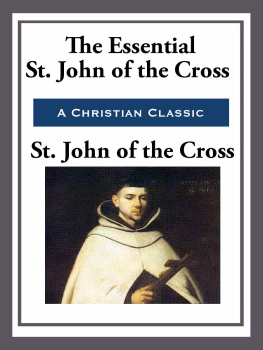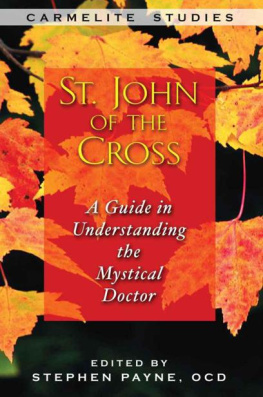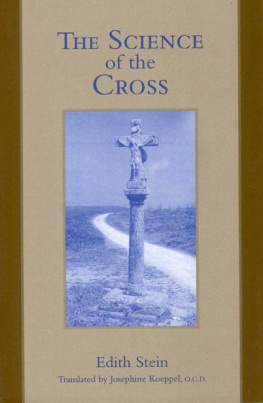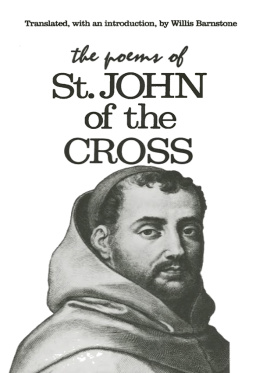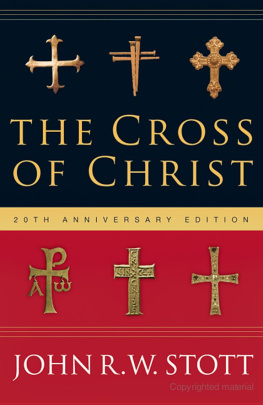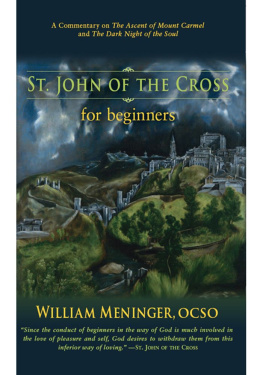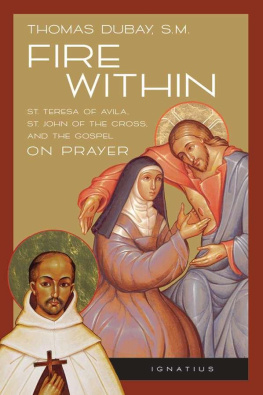The Essential St. John of the Cross
By Saint John of the Cross
Ascent of Mount Carmel
Dark Night of the Soul
A Spiritual Canticle of the Soul and the Bridegroom Christ
Twenty Poems by St. John of the Cross
Dark Night of the Soul
He soars on the wings of Divine love...
It is perhaps not an exaggeration to say that the verse and prose works combined of St. John of the Cross form at once the most grandiose and the most melodious spiritual canticle to which any one man has ever given utterance.
The most sublime of all the Spanish mystics, he soars aloft on the wings of Divine love to heights known to hardly any of them.... True to the character of his thought, his style is always forceful and energetic, even to a fault.
When we study his treatises principally that great composite work known as the Ascent of Mount Carmel and the Dark Night we have the impression of a mastermind that has scaled the heights of mystical science; and from their summit looks down upon and dominates the plain below and the paths leading upward.... Nowhere else, again, is he quite so appealingly human; for, though he is human even in his loftiest and sublimest passages, his intermingling of philosophy with mystical theology; makes him seem particularly so. These treatises are a wonderful illustration of the theological truth that graced far from destroying nature, ennobles and dignifies it, and of the agreement always found between the natural and the supernatural between the principles of sound reason and the sublimest manifestations of Divine grace.
E. Allison Peers
Ascent of Mount Carmel
Translated by E. Allison Peers
Start Publishing LLC
Copyright 2012 by Start Publishing LLC
All rights reserved, including the right to reproduce this book or portions thereof in any form whatsoever.
First Start Publishing eBook edition October 2012
Start Publishing is a registered trademark of Start Publishing LLC
Manufactured in the United States of America
10 9 8 7 6 5 4 3 2 1
ISBN 978-1-62793-209-7
A Spiritual Canticle of the Soul and the Bridegroom Christ
Twenty Poems by St. John of the Cross
Translators Preface to the First Edition
For at least twenty years, a new translation of the works of St. John of the Cross has been an urgent necessity. The translations of the individual prose works now in general use go back in their original form to the eighteen-sixties, and, though the later editions of some of them have been submitted to a certain degree of revision, nothing but a complete retranslation of the works from their original Spanish could be satisfactory. For this there are two reasons.
First, the existing translations were never very exact renderings of the original Spanish text even in the form which held the field when they were first published. Their great merit was extreme readableness: many a disciple of the Spanish mystics, who is unacquainted with the language in which they wrote, owes to these translations the comparative ease with which he has mastered the main lines of St. John of the Crosss teaching. Thus for the general reader they were of great utility; for the student, on the other hand, they have never been entirely adequate. They paraphrase difficult expressions, omit or add to parts of individual sentences in order (as it seems) to facilitate comprehension of the general drift of the passages in which these occur, and frequently retranslate from the Vulgate the Saints Spanish quotations from Holy Scripture instead of turning into English the quotations themselves, using the text actually before them.
A second and more important reason for a new translation, however, is the discovery of fresh manuscripts and the consequent improvements which have been made in the Spanish text of the works of St. John of the Cross, during the present century. Seventy years ago, the text chiefly used was that of the collection known as the Biblioteca de Autores Espanoles (1853), which itself was based, as we shall later see, upon an edition going back as far as 1703, published before modern methods of editing were so much as imagined. Both the text of the B.A.E. edition and the unimportant commentary which accompanied it were highly unsatisfactory, yet until the beginning of the present century nothing appreciably better was attempted.
In the last twenty years, however, we have had two new editions, each based upon a close study of the extant manuscripts and each representing a great advance upon the editions preceding it. The three-volume Toledo edition of P. Gerardo de San Juan de la Cruz, C.D. (1912-14), was the first attempt made to produce an accurate text by modern critical methods. Its execution was perhaps less laudable than its conception, and faults were pointed out in it from the time of its appearance, but it served as a new starting-point for Spanish scholars and stimulated them to a new interest in St. John of the Crosss writings. Then, seventeen years later, came the magnificent five-volume edition of P. Silverio de Santa Teresa, C.D. (Burgos, 1929-31), which forms the basis of this present translation. So superior is it, even on the most casual examination, to all its predecessors that to eulogize it in detail is superfluous. It is founded upon a larger number of texts than has previously been known and it collates them with greater skill than that of any earlier editor. It can hardly fail to be the standard edition of the works of St. John of the Cross for generations.
Thanks to the labours of these Carmelite scholars and of others whose findings they have incorporated in their editions, Spanish students can now approach the work of the great Doctor with the reasonable belief that they are reading, as nearly as may be, what he actually wrote. English-reading students, however, who are unable to master sixteenth-century Spanish, have hitherto had no grounds for such a belief. They cannot tell whether, in any particular passage, they are face to face with the Saints own words, with a translators free paraphrase of them or with a gloss made by some later copyist or early editor in the supposed interests of orthodoxy. Indeed, they cannot be sure that some whole paragraph is not one of the numerous interpolations which has its rise in an early printed edition i.e., the timorous qualifications of statements which have seemed to the interpolator over-bold. Even some of the most distinguished writers in English on St. John of the Cross have been misled in this way and it has been impossible for any but those who read Spanish with ease to make a systematic and reliable study of such an important question as the alleged dependence of Spanish quietists upon the Saint, while his teaching on the mystical life has quite unwittingly been distorted by persons who would least wish to misrepresent it in any particular.
It was when writing the chapter on St. John of the Cross in the first volume of my Studies of the Spanish Mystics (in which, as it was published in 1927, I had not the advantage of using P. Silverios edition) that I first realized the extent of the harm caused by the lack of an accurate and modern translation. Making my own versions of all the passages quoted, I had sometimes occasion to compare them with those of other translators, which at their worst were almost unrecognizable as versions of the same originals. Then and there I resolved that, when time allowed, I would make a fresh translation of the works of a saint to whom I have long had great devotion to whom, indeed, I owe more than to any other writer outside the Scriptures. Just at that time I happened to visit the Discalced Carmelites at Burgos, where I first met P. Silverio, and found, to my gratification, that his edition of St. John of the Cross was much nearer publication than I had imagined. Arrangements for sole permission to translate the new edition were quickly made and work on the early volumes was begun even before the last volume was published.

